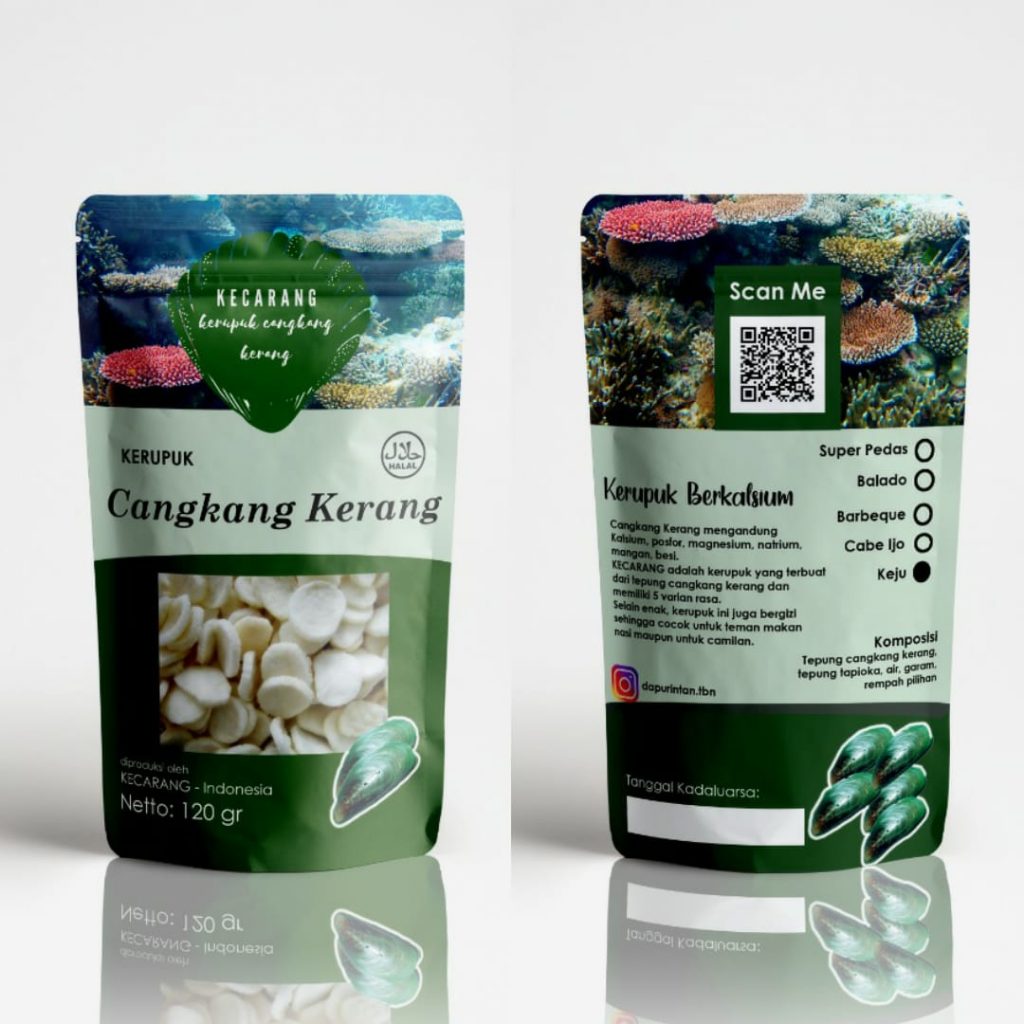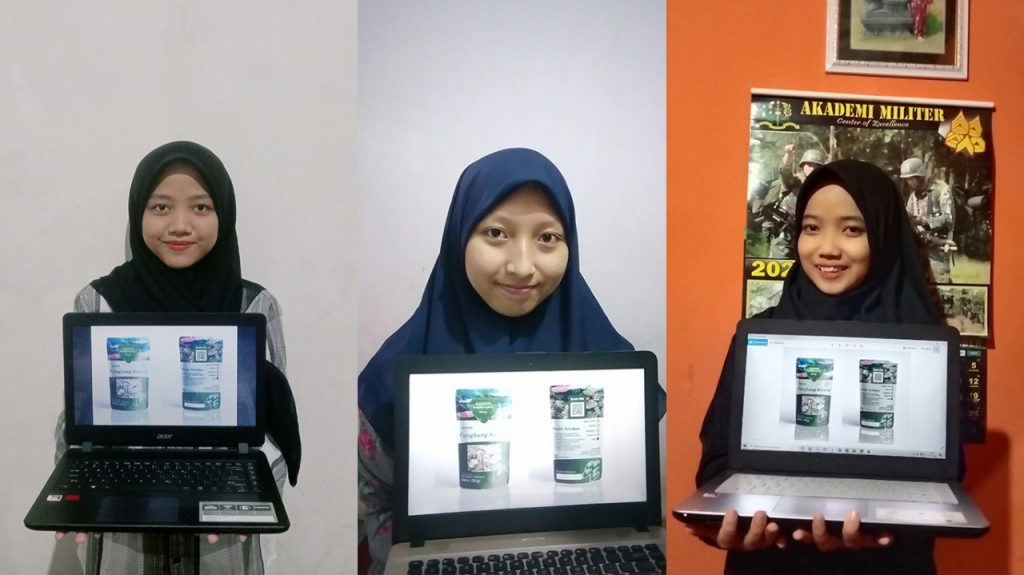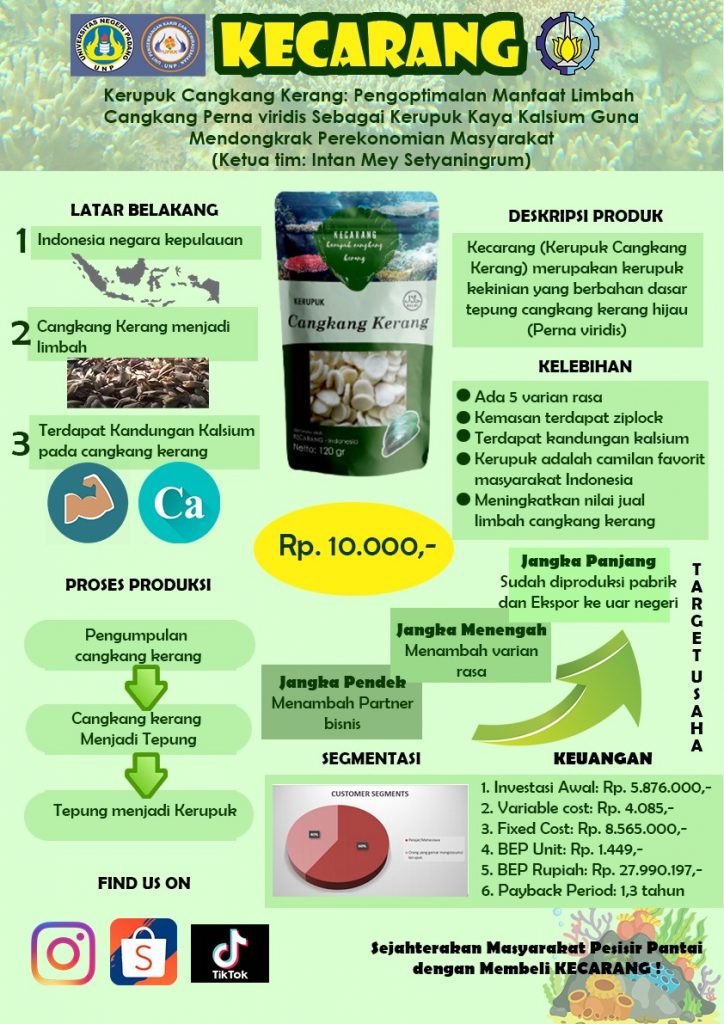ITS Students’ Create Kecarang, Kerupuk Made of Asian Green Mussel Shells

Kecarang, the krupuk made with Asian green mussel, the product of ITS students with its gorgeous packaging
ITS Campus, ITS News – Waste problems in the community must be resolved immediately with several innovations. One of the innovations is from three students of Institut Teknologi Sepuluh Nopember (ITS) who creates crackers derived from green clamshells called Kecarang.
The presence of calcium content in green mussel shells makes Latifatul Fajriah and Intan Mei Setyaningrum from the Engineering Physics Department and Fadhilah Rosyidatul ‘Arifah Department of Materials and Metallurgical Engineering interested in processing them into crackers.
Besides, seeing many green mussel cultivations in the Tuban area whose shells are underutilized made the three students of class 2019 believe that Kecarang can solve the waste problem and provide added value.
Also explained by Latifatul Fajriah, crackers themselves are one of the most popular foods with the Indonesian people. That is what makes Kecarang have promising business potential for the future. Besides the affordable price, Kecarang will also be available in several flavors. “Like the taste of BBQ, cheese, spicy,” said the student who is usually called Latif.

(from left) Fadhilah Rosyidatul ‘Arifah, Latifatul Fajriah, and Intan Mei Setyaningrum succeeded in providing innovations in utilizing green mussel shells
According to her, a package of Kecarang products containing 120 grams can be sold for IDR 10,000. “Meanwhile, the production cost per packaging only costs around Rp 4,300,” said the girl from Tulungagung.
The stages of the manufacturing process begin with boiling and washing the green clam shells. After drying, mash the green clam shells until it becomes flour. The next step, the flour is made into a dough by adding water, tapioca flour, sugar, and salt to a certain composition.
After it is evenly distributed, the dough is steamed for a certain time which is then cooled into the refrigerator. The next stage, the dough is sliced before putting it in the oven. Only when dry, Kecarang can be fried and added with various flavors.

The poster of Kecarang that won third place in the GEMNAS Batch 3 Business Competition, Universitas Negeri Padang in 2020
From this idea, Latif and his team won third place in the GEMNAS Batch 3 Business Competition, Padang State University in 2020, attended by 80 student teams from all over Indonesia, at the end of last October.
Finally, Latif hopes that this idea can be realized soon. Also, it is hoped that it can inspire other students to work in the business world. “Don’t hesitate to explore your interests or interests in a field, even though there is no provision just to try it, everything will definitely look difficult until you finish it,” he reminded. (sof/man/ITS Public Relations)
Related News
-
Gains Up 300 Percent, ITS Targets Increase in Scholarship Recipients
ITS Campus, ITS News – In the period 2020 – 2023, the scholarship disbursement budget collected by Institut Teknologi
December 01, 2020 19:12 -
Gains Up 300 Percent, ITS Targets Increase in Scholarship Recipients
ITS Campus, ITS News – In the period 2020 – 2023, the scholarship disbursement budget collected by Institut Teknologi
December 01, 2020 19:12 -
ITS students attend an international oil and gas conference in Saudi Arabia
ITS Campus, ITS News – Students from the Department of Ship Systems Engineering at Institut Teknologi Sepuluh Nopember (ITS)
December 01, 2020 19:12 -
ITS students attend an international oil and gas conference in Saudi Arabia
ITS Campus, ITS News – Students from the Department of Marine Engineering at Institut Teknologi Sepuluh Nopember (ITS) became
December 01, 2020 19:12
